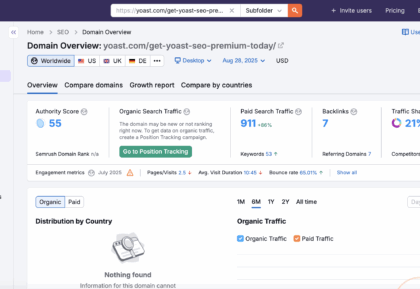Unlocking the Power of Real Estate Data Analytics
In today’s fast-paced real estate market, data analytics has become a game-changer for industry professionals looking to gain a competitive edge. By harnessing the power of data, real estate companies can make more informed decisions, improve operational efficiency, and enhance customer experiences.
The Role of Data Analytics in Real Estate
Real estate data analytics involves collecting, processing, and analysing vast amounts of data to extract valuable insights. This data can include property prices, market trends, customer preferences, demographic information, and more. By leveraging advanced analytics tools and techniques, real estate professionals can uncover patterns, trends, and correlations that would otherwise go unnoticed.
Benefits of Real Estate Data Analytics
There are numerous benefits to incorporating data analytics into real estate operations. For instance:
- Improved Decision-Making: Data-driven insights help real estate professionals make more accurate decisions regarding property investments, pricing strategies, marketing campaigns, and more.
- Enhanced Customer Experience: By analysing customer behaviour and preferences, real estate companies can tailor their services to meet individual needs and provide a more personalised experience.
- Optimised Operations: Data analytics can streamline processes such as property management, leasing operations, maintenance scheduling, and asset valuation, leading to increased efficiency and cost savings.
- Risk Mitigation: By analysing market trends and forecasting future developments, real estate companies can better assess risks and develop strategies to mitigate potential challenges.
Challenges in Real Estate Data Analytics
While the benefits of data analytics in real estate are clear, there are challenges that come with implementing such technologies. These challenges may include data privacy concerns, ensuring data quality and accuracy, integrating disparate data sources, and building a culture that values data-driven decision-making.
The Future of Real Estate Data Analytics
As technology continues to evolve rapidly, the future of real estate data analytics looks promising. Advancements in artificial intelligence (AI), machine learning algorithms, predictive modelling techniques, and IoT (Internet of Things) sensors will further enhance the capabilities of real estate analytics tools. Companies that embrace these technologies will be well-positioned to thrive in an increasingly competitive market.
In conclusion,
“Real estate data analytics is revolutionising the way industry professionals operate by providing valuable insights that drive strategic decision-making and improve overall performance. By harnessing the power of data analytics tools and techniques today,
real estate companies can unlock new opportunities for growth and success tomorrow.”
Maximising Real Estate Success: Six Key Benefits of Data Analytics
- Enhanced decision-making based on data-driven insights
- Improved operational efficiency through streamlined processes
- Better understanding of customer preferences and behaviour
- Optimised property pricing strategies for maximum returns
- Effective risk assessment and mitigation through predictive analytics
- Increased competitive advantage in the real estate market
Challenges in Real Estate Data Analytics: Privacy, Cost, and Compliance Concerns
- Data privacy concerns may arise due to the sensitive nature of real estate data.
- High costs associated with implementing and maintaining data analytics tools and infrastructure.
- Complexity in integrating disparate data sources from various systems and platforms.
- Potential challenges in ensuring the accuracy and quality of the data collected for analysis.
- Resistance to change within traditional real estate organisations that may be reluctant to adopt data-driven decision-making processes.
- Risk of over-reliance on data analytics, leading to potential oversight of qualitative factors that could impact real estate decisions.
- Legal and regulatory compliance issues related to handling, storing, and processing large volumes of real estate data.
Enhanced decision-making based on data-driven insights
Enhanced decision-making based on data-driven insights is a significant advantage of utilising real estate data analytics. By analysing and interpreting vast amounts of data, real estate professionals can make informed decisions that are backed by concrete evidence and trends. This approach minimises guesswork and uncertainty, leading to more accurate assessments of property investments, pricing strategies, market trends, and customer preferences. Ultimately, leveraging data-driven insights empowers real estate companies to make strategic decisions that are more likely to yield positive outcomes and drive long-term success in the competitive real estate market.
Improved operational efficiency through streamlined processes
Real estate data analytics offers the significant advantage of enhancing operational efficiency by streamlining processes within the industry. By leveraging data-driven insights, real estate professionals can identify bottlenecks, automate repetitive tasks, and optimise workflows. This leads to smoother operations, reduced manual errors, and increased productivity across various aspects of real estate management, such as property transactions, asset maintenance, and customer service. Ultimately, improved operational efficiency through streamlined processes enables companies to deliver better services to clients while maximising profitability and staying ahead in a competitive market.
Better understanding of customer preferences and behaviour
Real estate data analytics offers a significant advantage by providing real estate professionals with a deeper understanding of customer preferences and behaviour. By analysing data related to customer interactions, buying patterns, and feedback, companies can tailor their services to meet individual needs more effectively. This insight enables them to create targeted marketing campaigns, customise property offerings, and enhance overall customer experience, ultimately leading to increased satisfaction and loyalty among clients.
Optimised property pricing strategies for maximum returns
Real estate data analytics empowers industry professionals to optimise property pricing strategies for maximum returns. By analysing market trends, competitor pricing, historical sales data, and customer preferences, real estate companies can set prices that accurately reflect the value of their properties. This data-driven approach ensures that properties are priced competitively to attract buyers or tenants while maximising returns on investment. With real-time insights and predictive modelling, businesses can adjust pricing strategies dynamically to capitalise on market fluctuations and emerging opportunities, ultimately enhancing profitability and driving long-term success in the real estate market.
Effective risk assessment and mitigation through predictive analytics
Effective risk assessment and mitigation through predictive analytics is a significant advantage of utilising real estate data analytics. By analysing historical data, market trends, and other relevant factors, real estate professionals can identify potential risks and anticipate future challenges before they arise. This proactive approach allows them to develop strategies to mitigate risks, make informed decisions, and protect their investments. Predictive analytics empowers real estate companies to navigate uncertainties with confidence and take proactive measures to safeguard their assets and maximise returns.
Increased competitive advantage in the real estate market
Real estate data analytics offers a significant advantage by providing insights that enable companies to stay ahead of the competition in the dynamic real estate market. By leveraging data to understand market trends, customer preferences, and property performance, businesses can make informed decisions that give them a competitive edge. This strategic use of analytics allows real estate professionals to identify opportunities, optimise pricing strategies, target specific customer segments effectively, and ultimately enhance their market position. In a highly competitive industry where timing and precision are crucial, real estate data analytics empowers companies to make proactive and strategic moves that set them apart from their competitors.
Data privacy concerns may arise due to the sensitive nature of real estate data.
Data privacy concerns may arise in the realm of real estate data analytics due to the sensitive nature of the information involved. Real estate data often includes personal details about individuals, such as property ownership records, financial information, and transaction histories. As such, there is a risk that this data could be misused or compromised, leading to potential privacy breaches and security vulnerabilities. It is essential for real estate companies to implement robust data protection measures and adhere to strict privacy regulations to safeguard the confidentiality and integrity of this sensitive information.
High costs associated with implementing and maintaining data analytics tools and infrastructure.
One significant drawback of real estate data analytics is the high costs involved in implementing and maintaining data analytics tools and infrastructure. The initial investment required to set up robust data analytics systems, acquire advanced software, and hire skilled professionals can be substantial. Moreover, ongoing costs for system upgrades, maintenance, and training can further strain the financial resources of real estate companies. The expense associated with implementing and sustaining data analytics solutions may deter some businesses from fully leveraging the benefits of data-driven decision-making in the real estate industry.
Complexity in integrating disparate data sources from various systems and platforms.
One significant challenge in real estate data analytics is the complexity involved in integrating disparate data sources from various systems and platforms. The vast amount of data generated by different sources, such as property listings, market reports, customer databases, and financial records, can be stored in separate formats and systems. This fragmentation makes it difficult to consolidate the data effectively for analysis, leading to inconsistencies, errors, and delays in obtaining a comprehensive view of the real estate market. The process of harmonising these diverse datasets requires careful planning, robust data integration tools, and expertise to ensure accurate and reliable insights are derived from the combined information.
Potential challenges in ensuring the accuracy and quality of the data collected for analysis.
One significant con of real estate data analytics is the potential challenges in ensuring the accuracy and quality of the data collected for analysis. Inaccurate or incomplete data can lead to flawed insights and misguided decision-making, ultimately impacting the success of real estate operations. Issues such as data entry errors, outdated information, and inconsistencies across different sources can undermine the reliability of analytical results, posing a significant hurdle for professionals seeking to leverage data-driven strategies in the real estate industry. Addressing these challenges requires meticulous attention to data collection processes, robust validation mechanisms, and continuous monitoring to uphold the integrity of the analytical framework.
Resistance to change within traditional real estate organisations that may be reluctant to adopt data-driven decision-making processes.
Within traditional real estate organisations, a significant con of real estate data analytics is the resistance to change. Many established companies in the industry may be hesitant to adopt data-driven decision-making processes due to ingrained practices and a reluctance to embrace new technologies. This resistance can hinder the implementation of data analytics tools and prevent these organisations from fully leveraging the benefits that data-driven insights can offer. Overcoming this resistance and fostering a culture that values innovation and data-driven strategies is crucial for traditional real estate organisations to stay competitive in today’s rapidly evolving market.
Risk of over-reliance on data analytics, leading to potential oversight of qualitative factors that could impact real estate decisions.
One significant con of real estate data analytics is the risk of over-reliance on quantitative data, potentially overshadowing the importance of qualitative factors that could significantly influence real estate decisions. While data analytics can provide valuable insights and trends, it may not capture nuanced qualitative aspects such as local market dynamics, community sentiments, or individual preferences that play a crucial role in real estate transactions. Relying solely on data analytics without considering these qualitative factors could result in overlooking key elements that could impact the success of real estate decisions. Balancing quantitative data with qualitative insights is essential to make well-informed and holistic real estate decisions.
Legal and regulatory compliance issues related to handling, storing, and processing large volumes of real estate data.
Legal and regulatory compliance issues pose a significant challenge in the realm of real estate data analytics. Handling, storing, and processing large volumes of real estate data require strict adherence to data protection laws, privacy regulations, and industry standards. Ensuring that sensitive information is securely managed, preventing data breaches, and obtaining proper consent for data usage are crucial aspects that real estate professionals must navigate carefully to avoid legal repercussions. Failure to comply with these regulations can result in fines, legal sanctions, reputational damage, and loss of trust from clients and stakeholders. As such, addressing these compliance issues is paramount to maintaining ethical practices and safeguarding the integrity of real estate data analytics processes.






